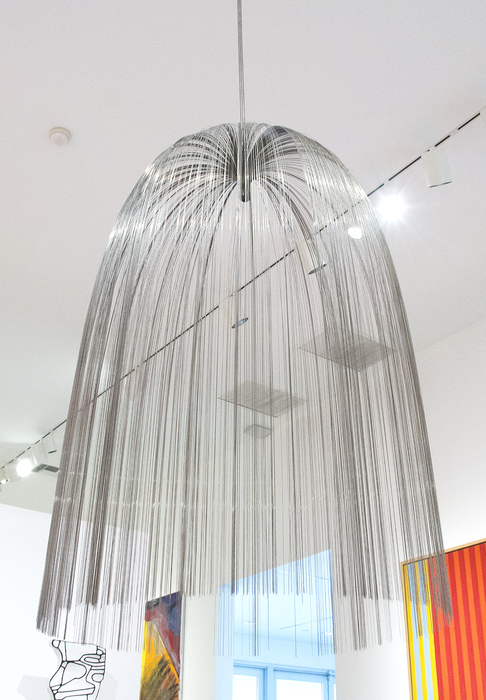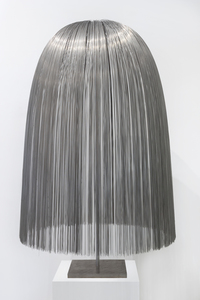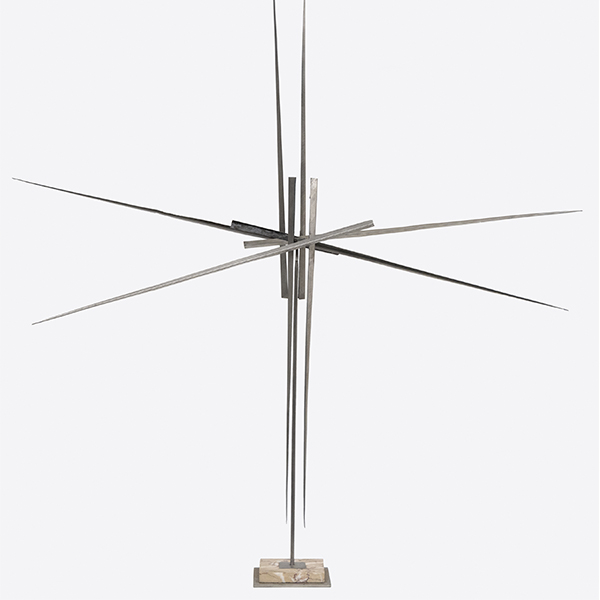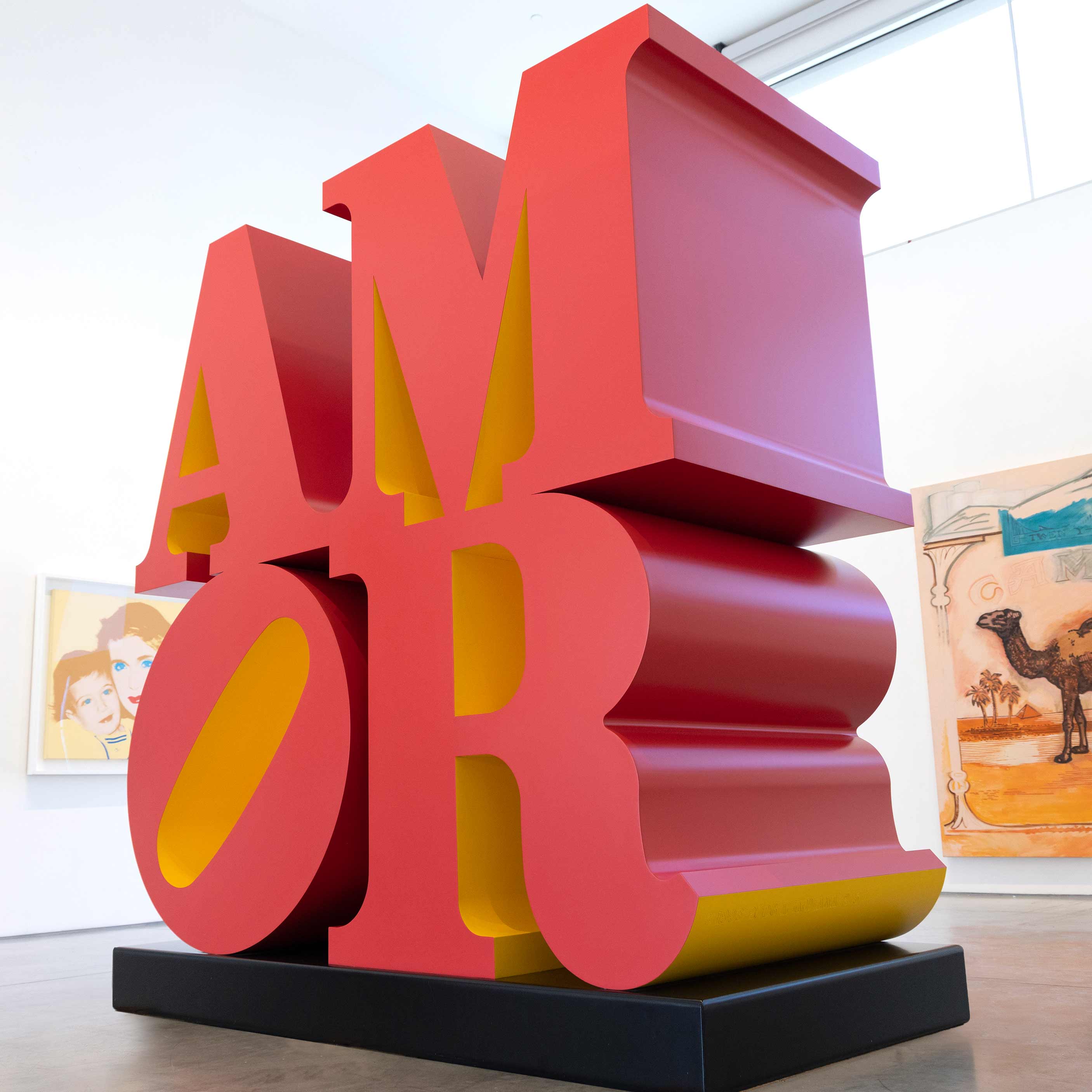HARRY BERTOIA (1915-1978)
 Harry Bertoia was born on March 10, 1915, in San Lorenzo Isontino, Italy. After immigrating to Detroit at age 15, he studied art and design at Cass Technical High School and drawing and painting at the Detroit Society of Arts and Crafts. In 1937, Bertoia received a scholarship to the Cranbrook Academy of Art in Bloomfield Hills, Michigan, where he studied until 1943. At Cranbrook, Bertoia found a community of artists that embraced the union of art and design, including architect Walter Gropius, urban planner Edmund Bacon, and designers Charles and Ray Eames. From 1938 to 1943, Bertoia headed the metals department at Cranbrook, opening his own workshop for jewelry design.
Harry Bertoia was born on March 10, 1915, in San Lorenzo Isontino, Italy. After immigrating to Detroit at age 15, he studied art and design at Cass Technical High School and drawing and painting at the Detroit Society of Arts and Crafts. In 1937, Bertoia received a scholarship to the Cranbrook Academy of Art in Bloomfield Hills, Michigan, where he studied until 1943. At Cranbrook, Bertoia found a community of artists that embraced the union of art and design, including architect Walter Gropius, urban planner Edmund Bacon, and designers Charles and Ray Eames. From 1938 to 1943, Bertoia headed the metals department at Cranbrook, opening his own workshop for jewelry design.
In the 1940s, Bertoia began experimenting with printmaking. His disinterest in the duplication inherent to the medium precipitated the use of movable plates and hand embellishments, distinguishing one print from the next through a series of flexible forms. In his search for a critical perspective on his experimentation, Bertoia sent 100 of his monoprints to Hilla Rebay, director and curator of the Museum of Non-Objective Painting (the first incarnation of the Solomon R. Guggenheim Museum), New York. To Bertoia's surprise, Rebay asked for pricing and purchased dozens of them, offering praise and encouragement and in 1943 exhibiting 19 of the prints at the museum. In 1943, 1945, and 1947, Bertoia's monoprints were shown alongside his commercially successful jewelry designs at the Nierendorf Gallery, New York.
In 1950, Bertoia moved to Pennsylvania to work for fellow Cranbrook graduates Florence and Hans Knoll, who allowed him full ownership of his designs, including the popular Bertoia Collection of latticed, expertly welded chairs. By the mid-1950s, the artist's designs were selling so well that he was able to devote his time exclusively to sculpture. Creating thousands of works of varying sizes, Bertoia adapted the welding, brazing, and burnishing of industrial metalwork in artworks that explore the relationships among line, form, and negative space. The influence of utilitarian design in his artworks facilitates their assimilation within their environments, and from 1953 to 1978 Bertoia received commissions to create his spatially complex sculptures for myriad public spaces. In 1960 he integrated his lifelong love of music into his sculpture, choosing particular metals and manipulating their form and mass in ways that would allow for sonorous response to wind or touch, and then recording their sounds. These "sonambient" sculptures were a focus of Bertoia's work until the artist's death on November 6, 1978, in Barto, Pennsylvania.
Solo exhibitions of Bertoia's works on paper and sculptures were held at the Smithsonian Institution, Washington, D.C. (1943); Wadsworth Atheneum, Hartford, Connecticut (1974); Art Institute of Chicago (1975); and Muhlenberg College's Martin Art Gallery, Allentown, Pennsylvania (1975), which awarded him an honorary doctorate in 1975. Major commissions can be found at such places as the Massachusetts Institute of Technology chapel, Cambridge (1955); State Department building, Washington, D.C. (1956); Davies Auditorium, Yale University, New Haven (1958); and the Federal Reserve Bank building, Richmond, Virginia (1978).
(Artist bio from Solomon R. Guggenheim Museum)

_tn46214.jpg )

_tn46213.jpg )
_tn47033.jpg )
_tn16764.b.jpg )

